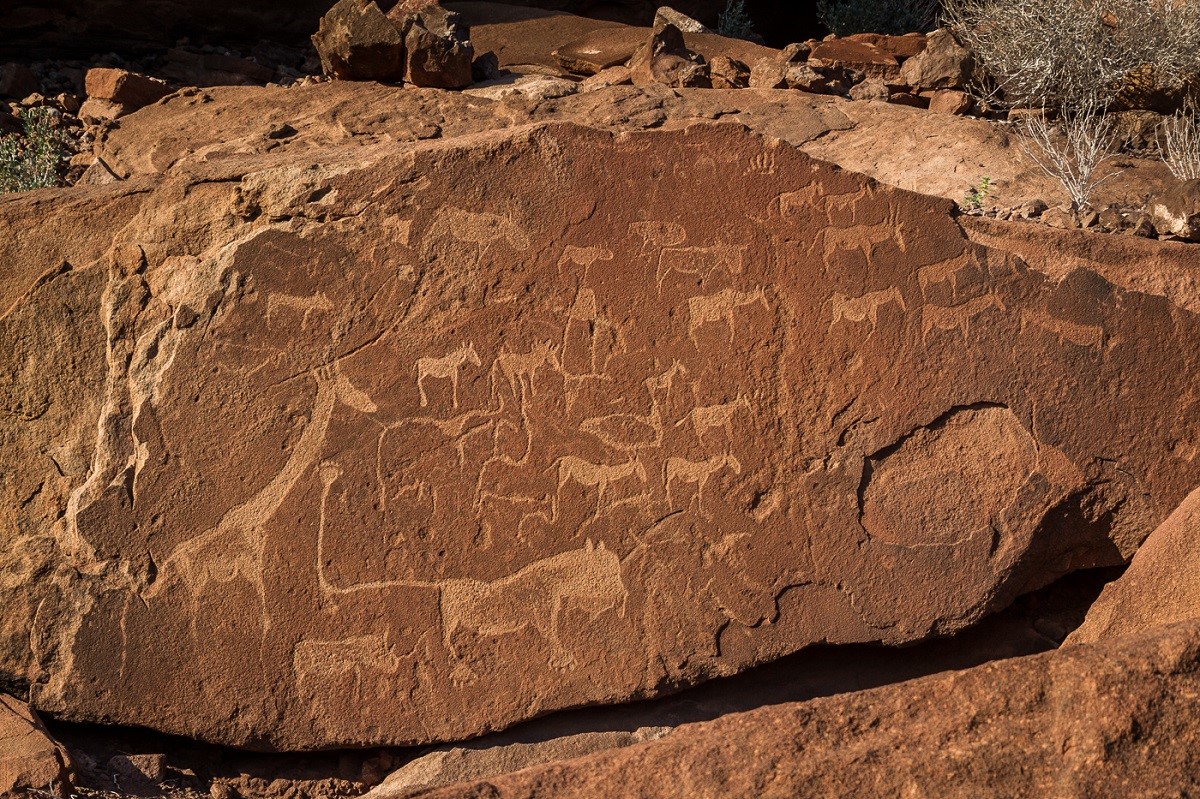
Namibia is fast developing a reputation as one of Africa’s must-visit safari destinations owing to its eclectic mix of breathtaking landscapes, diverse wildlife, and iconic national parks. However, beyond the vast expanses of the nation’s arid deserts lies a rich tapestry of history and culture waiting to be uncovered. From ancient rock engravings to incredible indigenous tribes, the country boasts a range of historic landmarks and communities that provide a unique perspective on its storied past. In this travel post, we’ll delve deep into Namibia’s historic sites, offering a glimpse into the cultural significance that often goes overlooked.
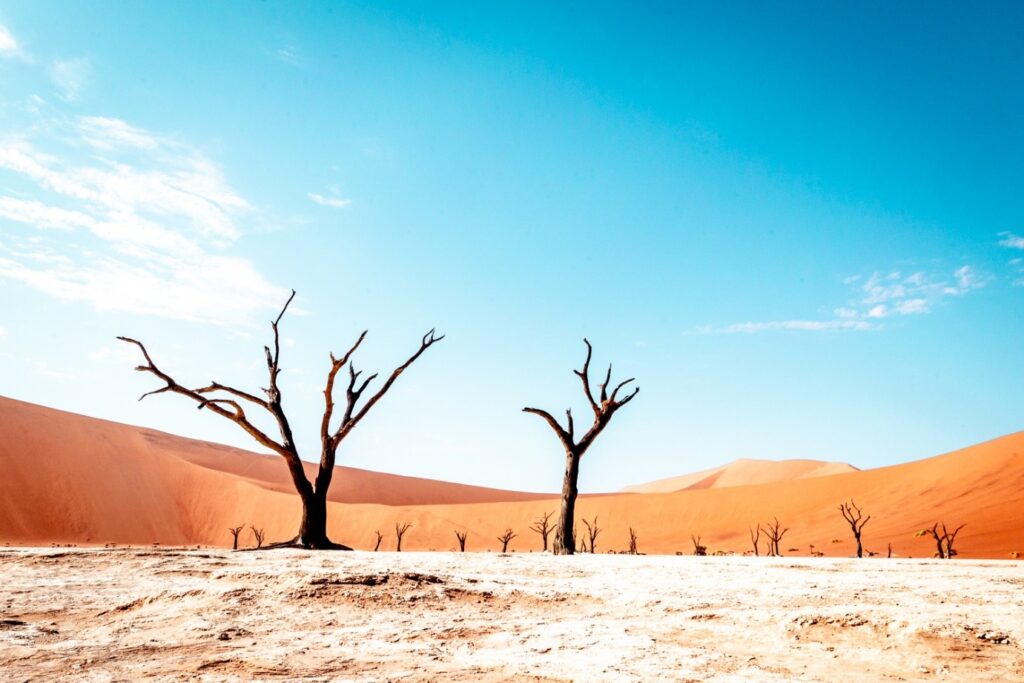
- Twyfelfontein Rock Engravings: Tucked away in enchanting Damaraland, Twyfelfontein stands as a testament to Namibia’s ancient cultural heritage. Declared a UNESCO World Heritage Site, this remarkable location boasts over 2,500 petroglyphs, etched into the rocks around 6,000 years ago by the San people. Whilst they not be impressionist masterpieces that you may expect today, the rock art depicts scenes from daily life, the region’s wildlife, and sacred rituals, providing a captivating window into Namibia’s distant past. Guided tours enhance the experience, unravelling the stories engraved in stone and fostering a profound connection between visitors and the ancient civilizations that once thrived in this arid landscape.
- Namib Desert’s Deadvlei: Within the mesmerising Namib Desert lies Deadvlei, a surreal tableau of natural artistry. This salt pan, encircled by towering red dunes, creates a landscape that seems plucked from a dream. Amidst the ethereal scenery, ancient camel thorn trees stand as ghostly sentinels, their skeletal forms a stark contrast against the white clay pan. Deadvlei isn’t just a geological marvel; it encapsulates the inexorable passage of time and the enduring resilience of nature, inviting contemplation amid Namibia’s breathtaking vistas.
- Kolmanskop Ghost Town: In the heart of the Namib Desert, Kolmanskop whispers tales of a bygone era, echoing the diamond rush that once defined its existence. Now ensconced in the relentless embrace of shifting sands, this ghost town presents a haunting spectacle. Abandoned buildings, frozen in time, tell stories of prosperity and abandonment. Kolmanskop serves as a poignant reminder of the impermanence of human endeavours, with visitors wandering through dilapidated structures swallowed by the desert, contemplating the transience of fortune.
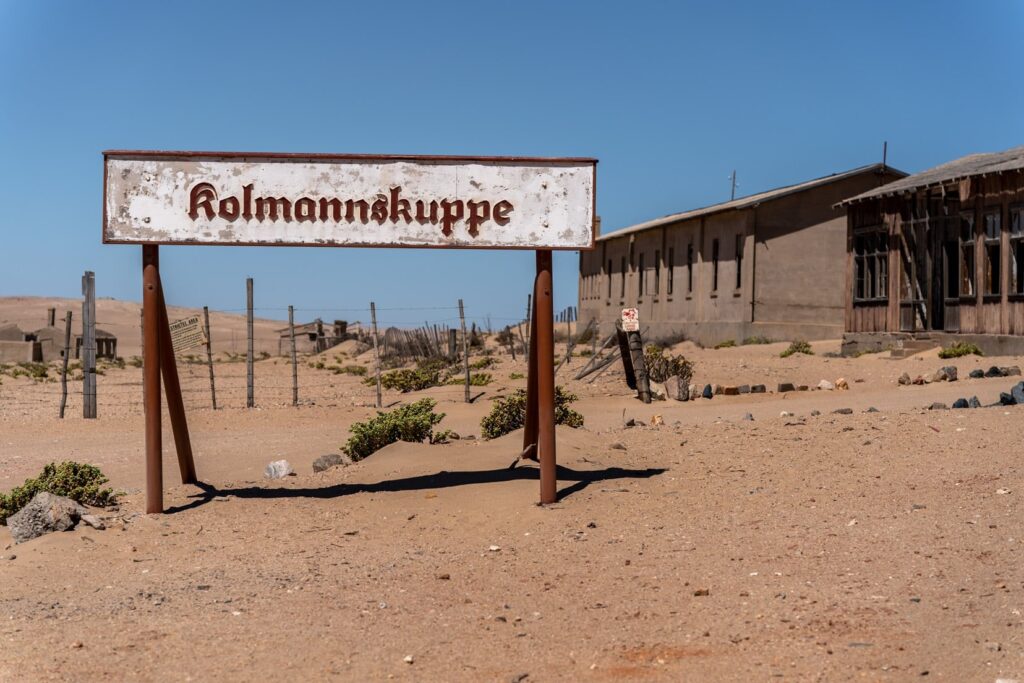
- The Heroes’ Acre: Overlooking Windhoek, the Heroes’ Acre stands as a solemn monument commemorating Namibia’s hard-fought struggle for independence. Dominated by a striking obelisk and statues immortalising key figures, this site invites visitors to reflect on the sacrifices made for freedom. The panoramic view of Windhoek from this vantage point adds a poignant touch to the experience. A visit to the Heroes’ Acre offers more than historical reverence; it provides a tangible connection to Namibia’s relatively recent storied politics and the indomitable spirit of its people.
- Alte Feste (Old Fortress): Nestled in the heart of Windhoek, Alte Feste, once a military stronghold, now stands as a living museum. It provides a fascinating journey through Namibia’s colonial history, particularly its German occupation. The fortress’s thick walls and strategic location offer a tangible link to the challenges and triumphs that shaped Namibia’s identity. Exploring Alte Feste is not just a walk-through history but an immersive encounter with the echoes of a bygone era.
- Tsumeb Museum: In the northern reaches of Namibia, the Tsumeb Museum is a treasure trove that preserves the region’s mining heritage. Displaying an extensive collection of minerals, fossils, and artifacts, the museum provides an engaging narrative of Namibia’s geological and industrial evolution. Visitors embark on a captivating journey, unravelling the forces that shaped this nation, from its ancient geological formations to the more recent impacts of mining.
- The Namibian Craft Centre: Within the heart of Windhoek, the Namibian Craft Centre stands as a vibrant testament to the nation’s living cultural heritage. Showcasing an array of local crafts and traditional art, this centre invites visitors to explore contemporary expressions of Namibian identity. It’s not just a market; it’s a cultural hub where travellers can purchase unique, handmade souvenirs, supporting local artisans and contributing to the preservation of artistic traditions.
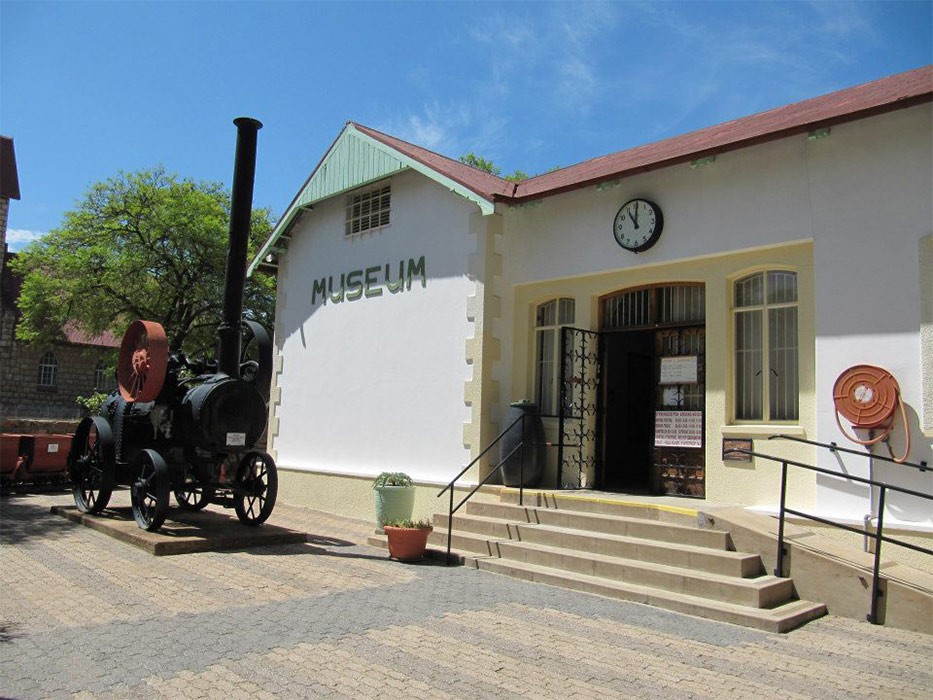
- Okahandja Woodcarvers’ Market: North of Windhoek, the Okahandja Woodcarvers’ Market is a bustling locale where traditional craftsmen breathe life into intricate wooden carvings. Reflecting Namibia’s diverse tribal cultures, the market provides a genuine connection to the country’s artistic traditions. Visitors can engage with artisans, witnessing the creation of unique pieces that capture the essence of Namibian craftsmanship and cultural diversity.
- Diaz Point: Near the coastal town of Luderitz, Diaz Point holds historical significance as the landing site of European explorer Bartholomew Diaz in 1488. The windswept landscape, adorned with a cross marking this historic event, enhances the gravity of the moment. Diaz Point offers visitors not only a historical perspective on Namibia’s early interactions with the outside world but also a rugged coastal beauty that complements the significance of this historical landmark.
- Waterberg Plateau: Beyond its stunning natural beauty, the Waterberg Plateau bears witness to a pivotal moment in Namibia’s history—the Battle of Waterberg during the Herero and Nama uprisings in 1904. Now a conservation area, the plateau stands as a testament to the complex colonial past of Namibia. Visitors can explore the lush surroundings, reflecting on the historical events that unfolded in this picturesque setting, connecting with the past while immersed in the splendour of the present.
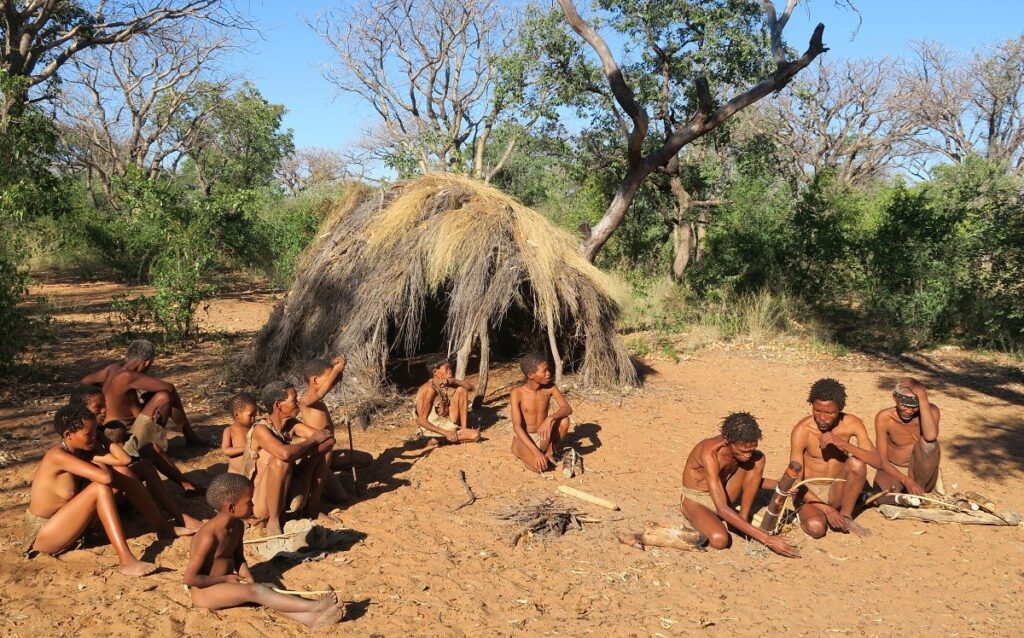
Indigenous Peoples & Communities
As we journey beyond Namibia’s iconic landmarks, we uncover the living legacy of indigenous communities that have called this land home for centuries. Two notable groups, the San people and the Himba, offer a profound insight into Namibia’s cultural diversity.
The San, also known as the Bushmen, are one of the oldest ethnic groups in Namibia, with a rich cultural heritage spanning tens of thousands of years. They are renowned for their deep connection to the land and their exceptional survival skills. Their traditional way of life even includes hunting and gathering techniques which are fascinating to witness up close.
In the remote northwestern regions of Namibia, the Himba people thrive in the arid beauty of Kaokoland. Known for their distinctive ochre-covered hair and intricate jewellery, the Himba maintain a semi-nomadic pastoral lifestyle. To connect with the Himba, tour operators like SecretNamibia offer unique safari experiences that incorporate visits to Himba villages. Namibia safaris from SecretNamibia aim to provide travellers with an authentic understanding of the Himba way of life, from their traditional huts to their spiritual rituals. It’s a cultural exchange that goes beyond observation, fostering meaningful connections between safari goers and this incredible community.
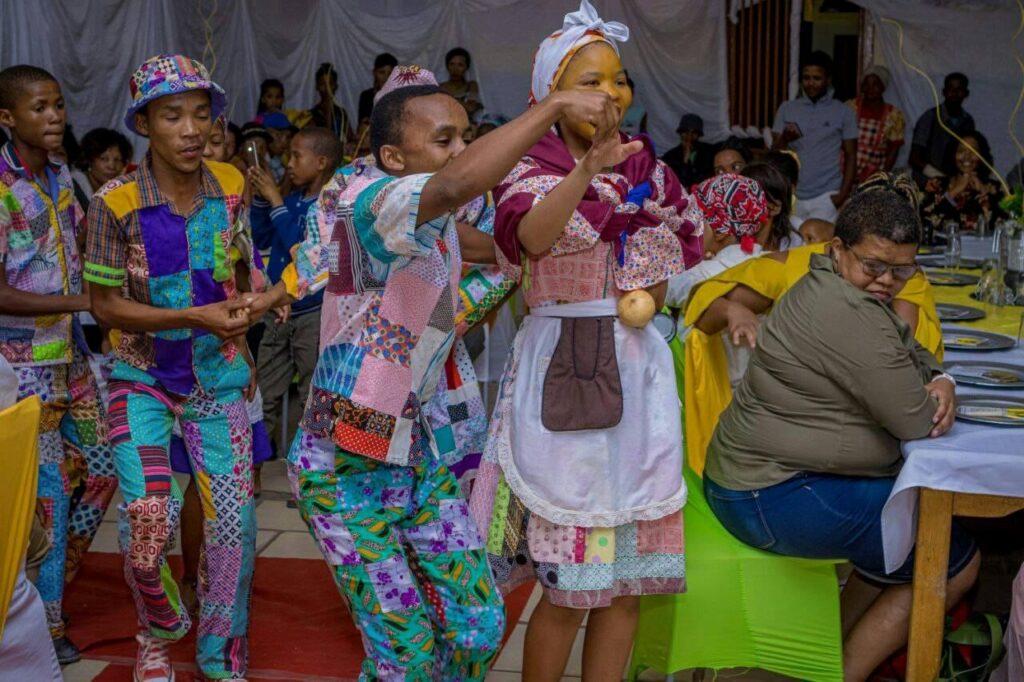
Cultural Festivals & Events
Beyond the intimate encounters with indigenous communities, Namibia’s cultural vibrancy comes alive during various festivals and events. These celebrations offer travellers a chance to witness the contemporary expressions of Namibia’s diverse identity. Amongst the most popular include:
Windhoek Carnival
For a burst of colour and energy, the Windhoek Carnival stands out as a lively celebration of Namibian culture. Held annually, it features vibrant parades, traditional dances, and elaborate costumes that represent the nation’s diverse ethnic groups.
Windhoek Jazz Festival
Music enthusiasts can immerse themselves in Namibia’s vibrant music scene at the Windhoek Jazz Festival. This annual event attracts local and international jazz artists, creating an electrifying atmosphere. Held against the backdrop of the capital city, the festival provides a contemporary perspective on Namibian arts and entertainment.
Nama Cultural Festival
Celebrating the Nama people’s rich heritage, the Nama Cultural Festival is a showcase of traditional dances, music, and rituals. Held in Keetmanshoop, this event offers a deeper understanding of the Nama community’s customs and traditions. Visitors can engage in cultural exchanges, participating in activities that bridge the gap between past and present.
